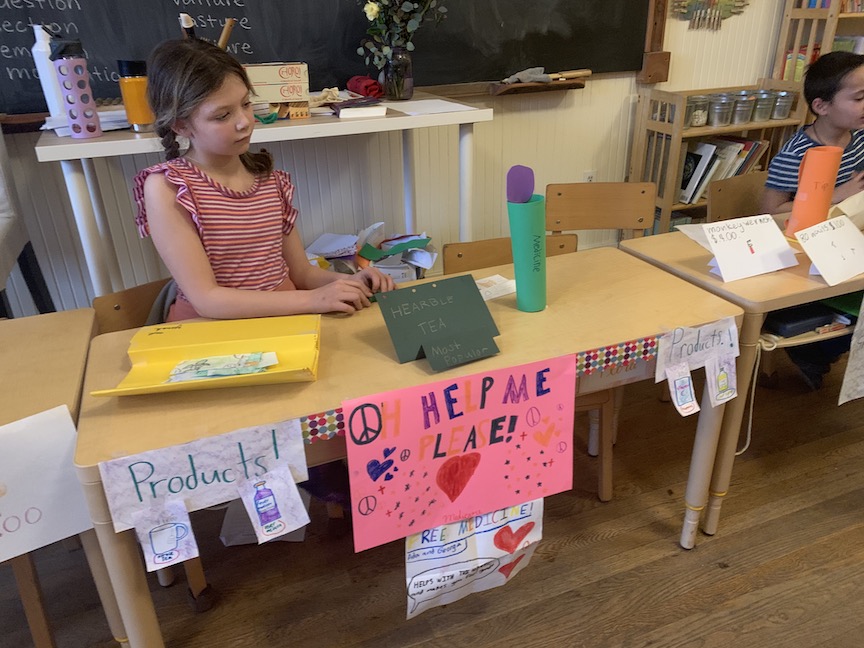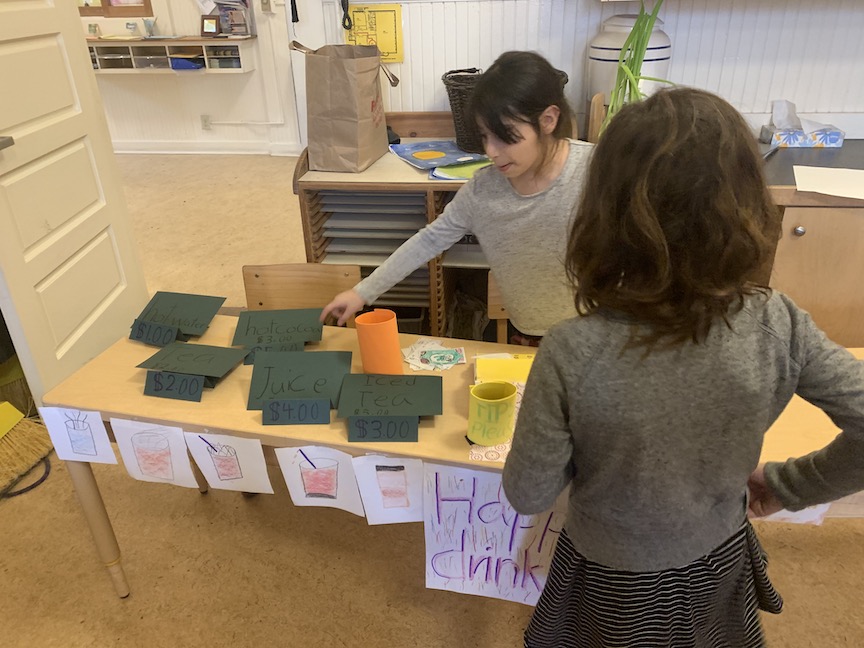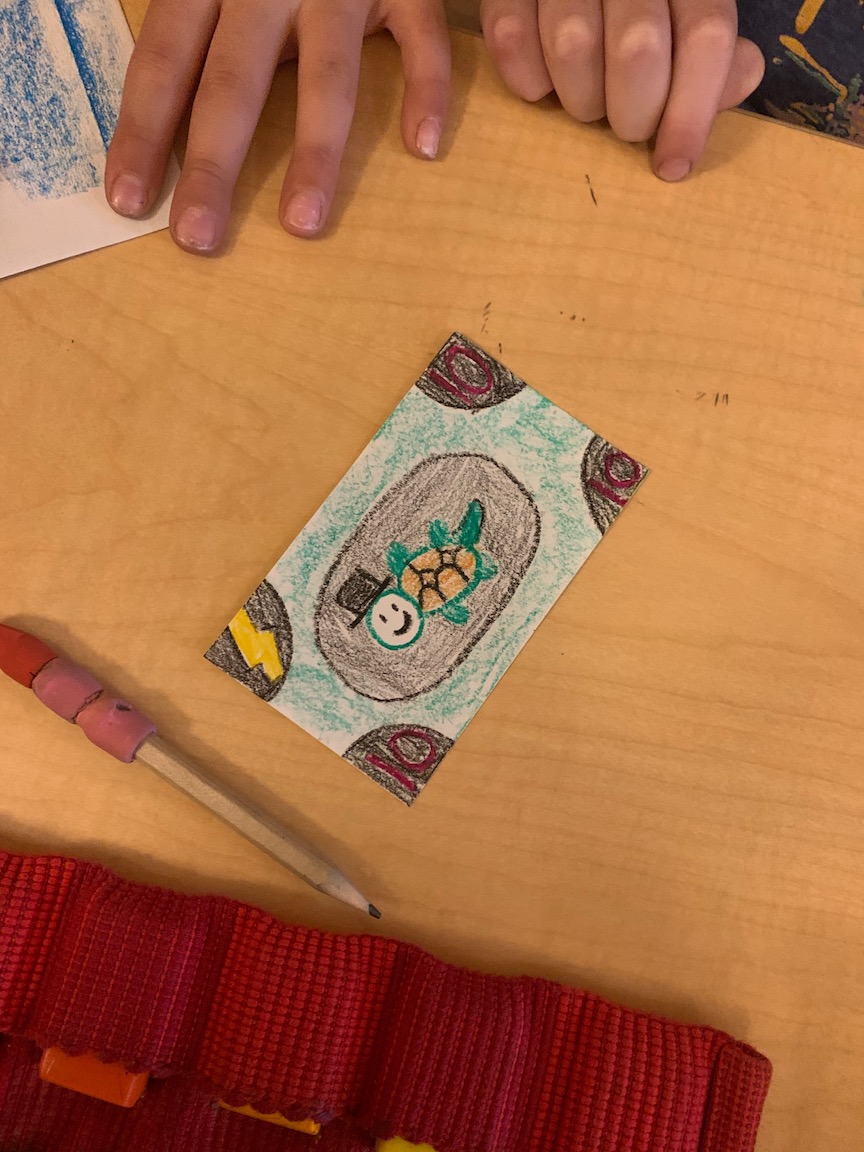Well, if I thought we were busy before the holiday break, I had no idea what we were in for!

Compared to 1st and 2nd grade, the beginning of our 3rd grade year was a whirlwind. With so many Hebrew festivals to celebrate, the peak of the harvest/farming season and so many cooking projects, each week was a flurry of activity. I was looking forward to the relatively focused, calming months of mid-winter.
Throughout my years of teaching, I have noticed that January is often a blissfully peaceful month. It’s a great time to dive into some juicy academic content, let go of all of the extras, and really knuckle down and learn.
The rhythms we’ve built all year have really taken hold.
There are few distractions — the holidays are over and spring hasn’t yet sprung.
We’re all ready for some regular classroom learning.
Well, third grade is a little bit different in that regard.
Even the math blocks are active and full of projects. And it takes weeks of preparation to make those projects come together. Because of this, as soon as January began, we hit the ground running.

Shelters
We’ll be working on our class play in the spring, so it seemed like a good idea to get the traditional shelter projects out of the way now, while we’ve still got some focused energy.

Now, there are a lot of opinions out there about the shelter projects. We had some good conversations about this Waldorf tradition at my summer training. Here is how some of those opinions played out.
- How valuable is it to assign a project like this? Often the parents do most of the work anyway.
- Shelter projects take time and energy away from the skill-building work that is so important in 3rd grade.
- The pedagogical value is in the exploring and learning about how human beings care for and protect themselves from the harsh environment. There are better ways to do this than assigning a shelter project?
- Instead of a shelter projects, kids should just go out in the forest and build forts. Then they can gather materials and build miniature shelters in the classroom — without adult assistance.
All of these opinions resonate and make sense to me, so it was all on my mind when I sat down and thought about how to create a shelter project that would accomplish the pedagogical goals, but limit the logistical drawbacks.

You see, at my school, the shelter project is one of our strongest traditions. Our school is a place where customs are regularly questioned. We value openness to creating new traditions and abandoning those that no longer resonate. (Just ask me sometime about our decision this year to cancel St. Nicholas and Santa Lucia!)
I love this aspect of our school. But it also means that we don’t have as many solid, tried-and-true traditions as many Waldorf Schools. But the shelter project is one that has stood the test of time. Some of my students have been imagining their shelter project for YEARS! I couldn’t possibly deprive them of the opportunity.
So, here’s the compromise I came to . . .
- We would take advantage of opportunities to build forts in the woods whenever we could. Luckily, our weekly farm trips this fall included a “forest play” rotation. Every week kids built forts. Yay!
- In preparation for the shelter project, we would gather materials and build impromptu shelter projects in the classroom. This was a remarkably successful experience when small groups of kids got together and gathered moss, sticks, rocks and mud from our park to build shelters. At the end I even “rained” on their shelters so they could see if their little beeswax creatures stayed dry.
- We would remember that shelter-building, since the beginning of human existence, has been a community project. Parents, grandparents, siblings, family and community members were all necessarily involved in the building of the shelter. We would all learn from the experience. I mean, after all, the children themselves aren’t the only students.
- The shelter project would contribute to our skill-building goals, rather than take time and energy away from them.
With these goals clearly identified, I set about creating a project. And in the end I’m so happy with what we’re doing.

I feel so good about the direction our projects are taking and with the level of intention that our class community is putting towards them. We’re all recognizing that this is not about creating an amazing project. It’s about building studentship skills. And we want these kids to know that we’ll help them learn how to manage their work, and we’ll work in community, until they can take it over on their own.
It’s a truly beautiful thing to watch unfold.
Homework
Now, I’ve never taught 3rd grade before. So I’ve never been involved with the assigning of a shelter project — I’ve only been in the parent role for this one.
But I’ve taught 4th grade, and I know the level of intention and energy I gave to building homework skills that year.
And the more I thought about it, the more I realized . . .
this shelter project is the first homework I’m giving!
I suddenly realized that setting an expectation for follow-through on homework would start NOW. And because I’m a believer in the whole “start with the end in mind” principle, I knew it was time to put together a plan.

Now, I know there is all kinds of talk in the zeitgeist about the minimal value of homework. And it’s true. I don’t expect homework to contribute to my students’ skill-building. Homework is not a tool I can reliably count on to make sure my students are making progress in their learning.
This may sound harsh, but if you’re giving homework hoping that it will help move your students’ skills along, you’re asking their parents to do your job. In some families, this works great. Some kids and some parents just LOVE learning about things together and kids are grateful to get their parents’ help. And when this happens, I encourage parents to go for it. Use their connection with their kid to be their guide and trust in the process.
But parents aren’t trained teachers. And sometimes family dynamics and circumstances make those learning experiences really challenging. I know this all too well. My THREE children were raised by a SINGLE parent Waldorf teacher. We were doing well if they all got to school in (mostly) clean clothes and with PB&J in the lunchbox. There wasn’t a lot of time for teachable moments.
So, I get it. And I am NOT about generating parent guilt. Parenting is hard enough without beating yourself up over it!
So, in my view, homework is not about learning how to do something difficult that your parents need to teach you. It is all about building a bridge between home and school. Say that again with me . . .
building a bridge between home and school.
My students are so in the moment, it takes active energy for them to remember that school even EXISTS when they’re at home. We’ve got to strengthen that skill before we can expect them to be successful with extending their learning at home.
So, our shelter project is all about building this skill. My guiding thoughts are:
- Building a daily habit of bringing something back and forth between school and home.
- Making homework SUPER EASY AND FUN.
Of course, my students are SUPER excited about it. And I’m happy to report that on Friday all of the third graders remembered to bring their homework folders!
I am so passionate about the topic of homework (and yes, I DO think there is some value to homework). I have so many thoughts about how to set kids up for success and how to thoughtfully build that connection between home and school.
It really deserves its own post. Note to self.
Waldorf 3rd Grade Money Main Lesson
When it comes to main lesson, this month we’re studying money. It seemed that the best way for the 3rd graders to truly understand money was to have a marketplace.

I’m not the first to have this idea. I know that last year’s 3rd graders made little things and sold them to each other for and created class currency. I know that other 3rd grades have had barter fairs. So much fun.
I really wanted to make sure that the lessons of working with money were at the forefront of our work, and we have so much else on our plates at the moment, that I decided to create an imaginary marketplace.

We created a class currency and I sorted students into groups. Each group had a shop that sold a basic necessity. We first defined what that was and came up with a list of necessities. I was really glad to have done this work first. The last thing I wanted was kids selling imaginary iPads and video games to each other. The class did a great job of building that list:
- vegetables
- fruits
- drinks
- clothes
- winter wear
- personal care
- medicine
- shoes
- tools
- furniture and home
We came up with a list of 12 shops and throughout the week they created the following:
- a store name and sign
- 4-6 products with prices
- signs for all of their products
- currency — every student needed 10 ones, 2 fives and 2 tens. (They voted and our class currency was “turtle shells.”)
We used our Friday project time to have our market. Kids had to visit every shop and spend their imaginary money for imaginary products.

They had a ridiculously good time.
At one point, my assistant and I looked at each other and she said, “Isn’t it great that they find this so fun?!”
Yes. Yes it is.





Leave a Reply